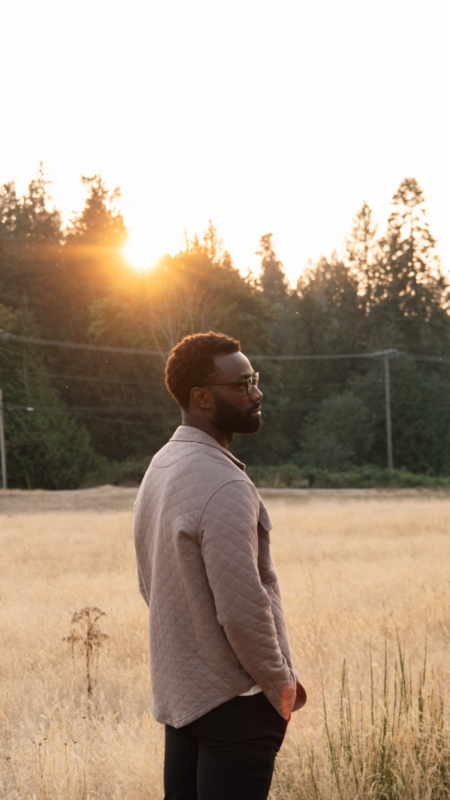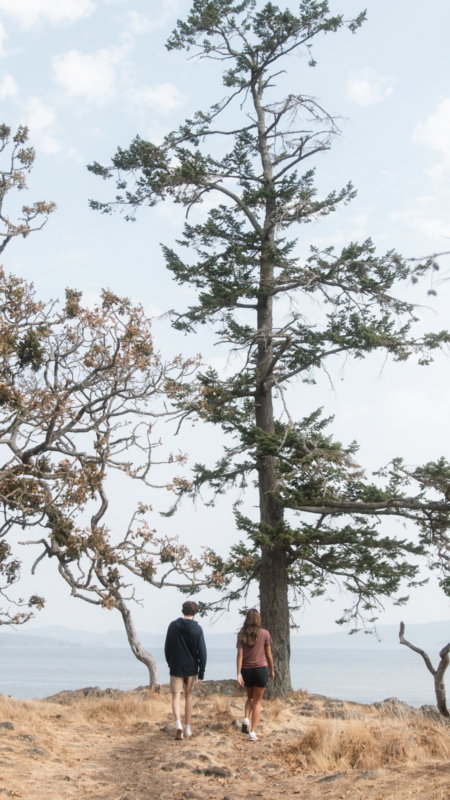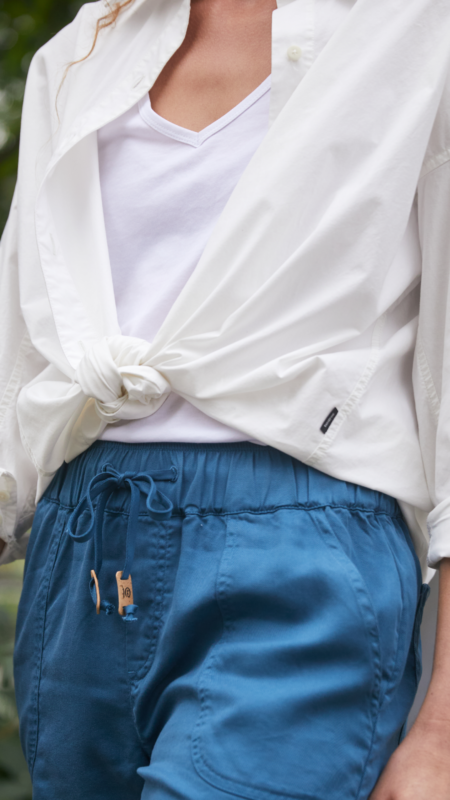The future of fashion will see brands held increasingly accountable for not only sourcing materials and producing clothing in a sustainable way, but ensuring there’s an “end-of-life” solution for every garment they make. This means that once you’re no longer wearing your [insert clothing item here] because it’s no longer in wearable condition or simply out of style, there’s a plan for it. The plan might be: having infrastructure in place for customers to re-sell the garment, or constructing the garment in such as way that it can be composted or recycled into something new.
In order to bring tentree’s Circularity program to life, we teamed up with two amazing partners who are leading the way in this space. Read on to learn from the innovative minds behind Treet and SuperCircle, as we grill them about the future of fashion.

Q: In a culture of fast fashion, what gives you hope for the future of retail and our culture of consumption?
Treet:
Recent studies paint a clear picture: consumers are more interested in sustainable brands. At the end of the day, brands will change for two reasons: (1) because consumers are demanding it, and (2) when the government says they have to. Fortunately, we’re living in a time when these two constructs are about to collide. The consumer demand is rising and we’re on the precipice of more government intervention to force brands to take greater responsibility for items sold. I’m also very encouraged by the innovative solutions coming to market to help brands on this journey – companies like Treet and SuperCircle are born out of the desire to lighten the load for brands to choose a more sustainable path.
SuperCircle:
In today’s world of fast fashion, where trends change as swiftly as the seasons, the textile industry is grappling with monumental challenges related to circularity and waste management. SuperCircle was created to combat this crisis, pioneering innovative solutions to transform the landscape of textile recycling. Through collaboration with brand and recycling partners and growing consumer participation in the circular economy, we are paving the way for a more sustainable future. What gives us hope for the future of retail is seeing the number of companies building and scaling innovative solutions, as well as the push for policy and legislation to support the circular economy of textiles. There is no silver bullet, no one size fits all solution, but with motivated and passionate people working on tackling the current problems of the industry through different lenses, we are hopeful that a better future for fashion is possible.
Q: Since your company’s inception, what kind of progress have you seen in this space?
Treet:
When Treet launched in mid-2021, there were only a handful of brands with resale programs. Today, Treet powers over 130 branded resale experiences, over half of all resale programs in North America. Branded resale is still in its infancy, but it’s exciting to see this type of explosive growth in such a short time period.
SuperCircle:
Over the last few years, we have seen the concept of circularity emerge and gain widespread adoption. When we launched our circular in-house brand, Thousand Fell, back in 2019, no one knew what circularity meant. Now, we are seeing numerous brands (tentree was one of the first!) offering full scale circularity programs. Resale has also been widely adopted over the last number of years as part of a circularity solution, with recycling programs and 360 circularity programs starting to be adopted now. Discussion and progress at the legislative level over the last couple years has also propelled the circular economy, marking a pivotal moment in the industry’s evolution. Since its inception, SuperCircle has helped to drive significant progress in the textile recycling space.

Q: What do you wish people knew about their clothes once they’re discarded?
Treet:
We wish people knew how many billions of pounds of clothes end up in landfills every year and how that contributes to greenhouse gas emissions. We also wish they knew how easy it is to resell their items to make an extra buck or use a service like SuperCircle to recycle the items they no longer want. It’s tough to compete with the convenience of throwing something away, but we think we’re getting there.
SuperCircle:
We want consumers to understand the importance of recognizing the value in used clothing. Contrary to the notion of items being thrown “away,” most end up in landfills or shipped overseas—there really is no “away.” Through initiatives like recycling and resale, the intrinsic value of used clothing is highlighted, driving home the message that every garment has value past its first owner.
Q: What do you wish all brands were doing?
Treet:
Our hope is that all brands in the coming years will have a circularity strategy that will start with creation and end with recycling, including resale as an “extension of life” path in between. Not only is this what’s needed from an environmental standpoint, but it also benefits their bottom line. When brands enact these types of programs and create more thoughtful products, this leads to increases in customer happiness and loyalty, repeat purchasing behavior from participation in resale or trade-in, revenue gains by participating in resale, and much more. The story is too good to ignore.
SuperCircle:
We wish all brands were doing what tentree is doing—prioritizing 360-degree circularity programs. From continuous innovation in product development to responsible material sourcing, these key initiatives (in addition to end-of-life textile solutions) can drive meaningful change. We also believe in the power of brands to educate and drive greater consumer awareness of sustainable practices. The sweet spot exists where a brand focuses on their internal practices/operations as well as education of the consumer. Consumers should be given the options and tools to make better choices, without the burden of having to do the in depth exploration that is required to understand circularity efforts at a deep level. This is a shift we believe is necessary – brands need to take on more responsibility for what they are putting in the world, rather than consumers having to investigate before making purchases.
Q: What are three things you wish people looked for when shopping for clothing?
Treet:
(1) More than ever before, customers are considering the resale value of an item before making a purchase. Think about it… if you buy an item for $100 and it’s reselling for $60, that same item only “costs” $40.
(2) I wish more consumers would look past greenwashing catchphrases and dig into the weeds of what makes products truly “sustainable” if that’s one of their pillars for making purchases.
(3) Before making a purchase, my wish would be that everyone take a deep breath and consider, “is this item absolutely necessary?”.
SuperCircle:
When shopping for new clothes, we encourage consumers to keep circularity front of mind. Here’s three things you can do:
- Check what kind of end-of-life/circularity program the brand offers
- Understand what materials the brand uses, opting for those conducive to fiber to fiber recycling
- Ensure consideration of environmental impact is part of the brand’s values, that they provide transparent insight into their efforts, and are reporting on their initiatives annually
Q: Do you think consumer and brand behavior are changing in a meaningful way?
Treet:
The secondhand market is growing 11x faster than retail and the number of brands jumping into circularity is growing at an accelerating rate. From a consumption perspective, this is absolutely encouraging.
Supercircle:
Yes! We’re optimists at SuperCircle and firmly believe that gradual but meaningful shifts in consumer and brand behavior are happening every day. From heightened awareness of the textile crisis and environmental impacts of production and consumption, to active support for the circular economy, consumers are increasingly aligning their choices with ethical and environmental values, and brands are starting to seek solutions for things that they used to ignore.

Q: In an ideal world, how would the shopping and resale/ recycling cycle look for everyone?
Treet:
Treet’s mission is to make secondhand feel firsthand for brands and their customers around the world. This means lowering the barrier to participating in the secondhand movement. In an ideal world, consumers would think secondhand first.
Supercircle:
In an ideal world, the shopping and recycling cycle would be seamlessly integrated into the industry framework. Brands would bear the responsibility of end of life of their garments, while being incentivized and encouraged (at a policy level) to make more sustainable choices, while consumers participate in the circular economy as the norm.
Q: What’s next in textile recycling and resale?
Treet:
Next up is total normalization of resale and recycling. As we mentioned before, we’re in the early innings of this movement and it’s exciting to dream up where this will go. We think we still have a ways to go until brands fully embrace circularity and all its benefits, but we’re on our way.
SuperCircle:
Looking ahead, we anticipate (and are actively working on) advancements in sorting technologies and chemical recycling methods. We’re also working on scaling circularity programs for brands and (at the same time) bolstering consumer education. With increased technological capabilities, matched with consumer education, and hopefully some major policy enabling scalable solutions, this will all drive systemic change in the fashion industry.
Q: Anything else you want shoppers to know?
Treet:
It can be daunting for brands and consumers to “be more sustainable” but the reality is there are small ways to dip your toe in the water and grow toward being more sustainable over time. Next time you’re considering making a purchase, ask yourself “is it needed?” then if it is, try to find that item secondhand.
SuperCircle:
Collective action is what will revolutionize the textile industry. With initiatives like tentree’s circularity program leading the way, there’s hope for a future where sustainability is not just a trend but a fundamental pillar of the fashion industry. If you haven’t yet participated in the circular economy, start here with tentree!
Keep Reading
Introducing Circularity by tentree
By planting trees for every item you purchase, it’s our mission to plant 1 billion trees by 2030. Head to our website to learn more and begin your planting journey with 10% off.

